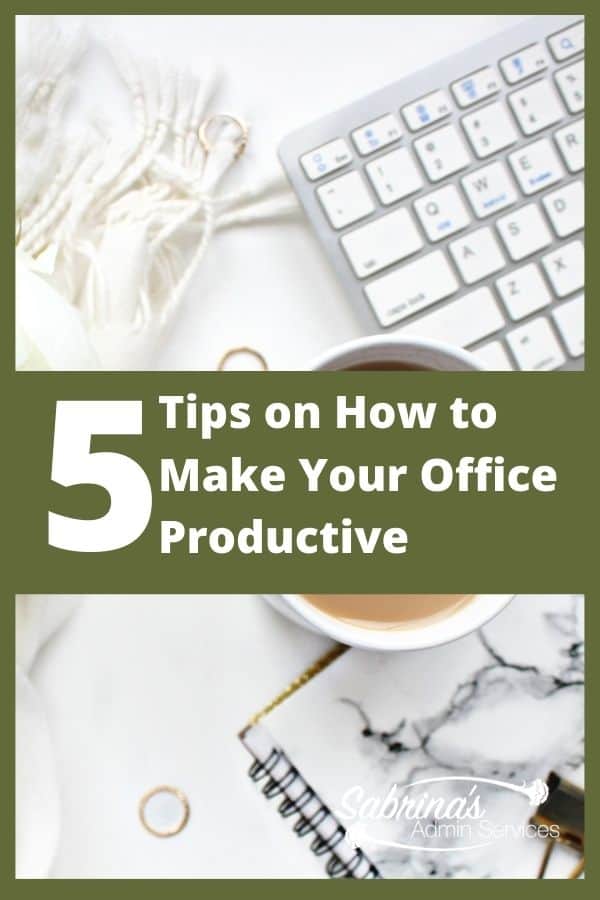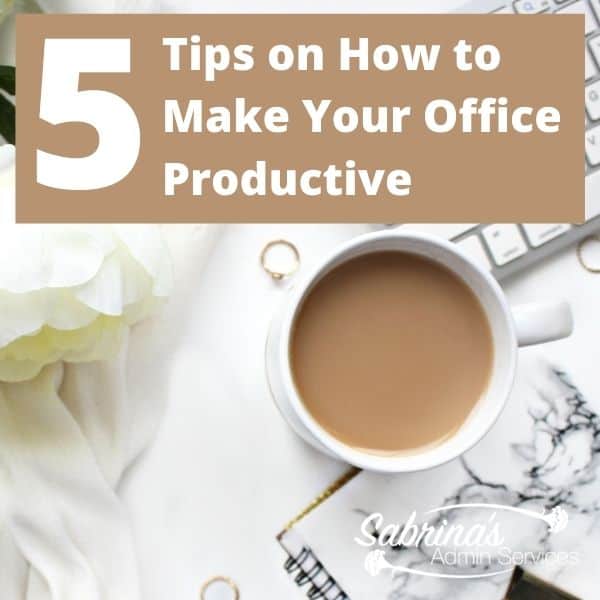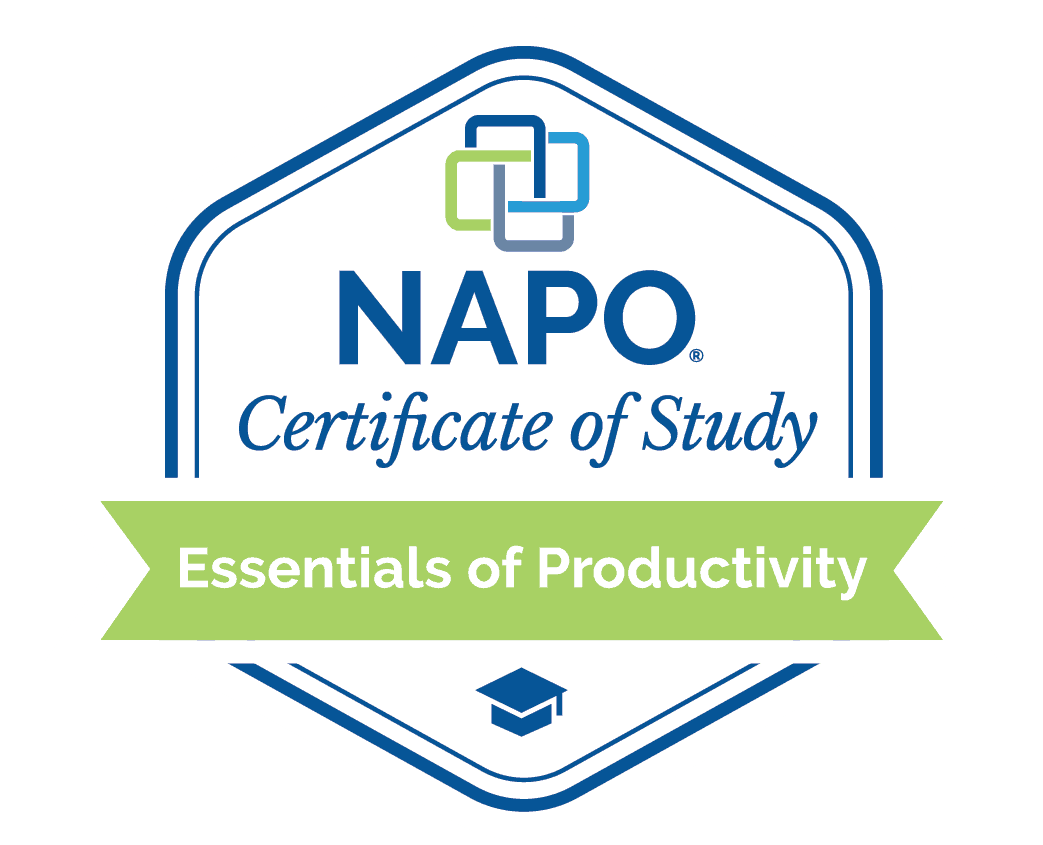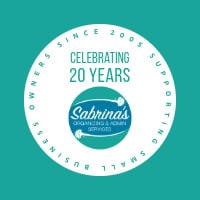Tuesday is said to be the most productive day of the week. With the Monday morning meetings behind you and your priorities set for the week, Tuesdays are usually the most productive days. But it doesn’t have to be. This post talks about five tips on how to make your small business office productive every single day, not just on Tuesdays.
Table of contents
- 5 Tips to Make Your Office More Productive
- Start each day with a list of things to do in priority order.
- Do one task at a time.
- Determine your best time to work on different tasks.
- Schedule an hour at least 2 – 3 times per week as “Do Not Disturb” times and tell others so they are aware of it.
- Stay on top of technology to help your office productivity.

5 Tips to Make Your Office More Productive
Start each day with a list of things to do in priority order.
You can use letters or numbers to prioritize your tasks. “1” can be the highest priority, while “5” could be the lowest. Or, you can use the letters “A” for the highest priority and “D” for the lowest priority. You can even make it fun and try using symbols for priorities instead. Priority # could be most important, where a “~” could be second in importance. And, the third priority could be a “*”. Whichever method you use, stay consistent and use it ALL THE TIME. If others need to know about your priorities on tasks, be sure they know your system.
Do one task at a time.
No multi-tasking here. Focus on one task, then move on to another. That’s it, plain and simple. Make sure your goals are realistic and easier to accomplish. This will give you the motivation to get more done when you can finish one first. It takes a toll on you and your task; read this article about switching will cost you efficiency.
Determine your best time to work on different tasks.
But how do you do that? You need to ask yourself these questions to help determine what the best work time is for you.
Which hours in the day can I be most productive? Is it in the morning 9 AM – 11 AM? How about 1 PM – 4 PM? Or is it at night?
What is the best time of day for me to have meetings? When can I communicate the best with others? Am I awake and ready to speak after breakfast or lunch?
What time of day is the best time for me to communicate with particular people? Do particular people communicate better when we talk at a particular time?
If you can not answer these questions, track your time with your energy level for one week. Using a sheet of paper or spreadsheet, write the date, the time of day, and how you feel when doing your work. Are you lightheaded? Do you get distracted easily? Ask yourself these questions for every hour of your day and see if there is a pattern. It will determine your most optimal time for head-down work.
If you need help figuring out how long tasks take to do, you can check out our Project Estimation Post for help.
Creative Ways to Deal with Distractions, like kids, dogs, and cats in your home office
Get your free copy of Creative Ways to Deal with Distractions, like kids, dogs, and cats in your home office
Schedule an hour at least 2 – 3 times per week as “Do Not Disturb” times and tell others so they are aware of it.
If you get distracted often in your office, add a sign to your door that says “Do Not Disturb”. Below are some other posts that we wrote to help you stay focused on the task at hand.
How to Stay Productive When working from Home
Easy Ways to Make a Business Calendar More Effective
7 Easy and Useful Ways to Keep Focused During the Day
Stay on top of technology to help your office productivity.
Spend some time and look for communication and collaboration apps to help you and your team modify and revise documents easily. Some collaboration/to-do apps you can purchase are:
Asana is an app that helps teams organize, track, and manage their work.
Todoist is another one that will help you to organize your team in your business. They also have a personal work version as well.
You can also use apps like Google Drive, Microsoft OneDrive, DropBox, and Evernote, where you can share files and keep people updated on changes to tasks and activities. This is great for work-at-home colleagues (affiliate) and employees.
There are lots of other ones out there. It really does depend on what you need to share with others. First, determine what you want to share, and then figure out the best app to use.
Using these productivity tips will help you make your office productive every day, not just on Tuesdays. Let me know how it goes by leaving a comment below. What is your most effective tip for making your office productive? I would love to hear from you.
Visit our other posts to help you with additional tips on how to make your office productive during a busy time.
10 Creative Ways to Use Sticky Notes In Your Small Business
20 Ways to Make a Business More Productive
Please note: There are affiliate links on this post, and at no additional cost to you, I will earn Amazon (affiliate) affiliate fees if you decide to make a purchase.
OTHER RELATED POSTS!







These are all wonderful tips! I admit that I still need to figure out my best working times. I think my judgement on this is still thrown off by working in corporate environments for so long where how I used my time was pretty much determined for me.
For technology, I’ve been a big fan of Motion. Very similar to Asana, but will schedule tasks into my calendar for me. While I might not follow it strictly, it will help guide my decisions on what I want to accomplish in the day.
Excellent points. I couldn’t agree more, and I practice all of these.
I never end my day without prioritizing the tasks for the next day, and I eschew almost all forms of multi-tasking. (I do read a book while I’m drying my hair, but otherwise avoid two tasks that require my attention.) And when I need to do what Cal Newport calls “Deep Work” during those do-not-disturb hours, I must not only guard against others encroaching on my time (easy-ish, because I work in solitary) but against allowing myself to distract myself with quick checks of email or texts or social media (or the snack cupboard)!
It has taken me a long time to figure out when my best times to do things are, but now I guard these boundaries like crazy. No, I won’t work with clients in the morning, because my brain isn’t snappy then! I teach my clients to identify how their physical, intellectual, and social energy patterns flow; without that, as you note, you can’t figure out the ideal times to do things, and that ensures wasted effort.
Thanks for stopping by and sharing your thoughts, Julie. It does take us time to figure out what works for us. And, it’s good to be kind to ourselves during the process.
I need to work on this and maybe do some time tracking. I find a to do list is helpful. I am most productive in the morning. Some good ideas here to keep in mind.
I’m glad it helps you, Kim. Thanks for stopping by, Kim!
I make my list of things to do the next day at night and try to list them in order of what needs to happen first. I find I sometimes knock out the really quick and easy things first saving the more time consuming things for later in the morning. My schedule varies everyday so planning the night before lets me take into account meetings which have just been scheduled, client appointments, and desk work. I really love it when I get through my list for the day and have few things that I haven’t at least touched.
No matter how much we hear it, we still seem to struggle with doing one thing at a time. I find, if I have trouble staying attentive, I allow myself to cycle through tasks, while staying focused on only one thing when it is that items “turn” in the rotation.
For me, getting started on a task that requires focus is the hardest part. I love the planning process, I know when I’m most alert and able to focus, and I have nice spots to work. It is pushing through when I don’t “feel like it” that can be hardest. Fortunately, in many cases, once I get going things get easier.
To a certain extent, we can choose to be productive, right?
I agree! We do have some level of control of our day to improve it. It’s just a matter of figuring out what can be streamlined.
I like the idea of making more days productive. One thing I noticed for myself is balancing energy during the week. All days can be fruitful, but not to the same degree. While I do prioritize tasks for each day, some days are more intense than others. Those days take additional energy, so I balance them with a calmer day to follow when possible.
As far as multi-tasking goes, I prefer single-tasking. It’s gentler on the brain and also boosts capability and engagement.
I am also a fan of single-tasking. I do find that it keeps me focused on the task at hand. Thanks for stopping by and commenting, Linda!
Using an online scheduler prevents unexpected phone calls and lets me make myself unavailable when I want to be in “do not disturb” mode. It also eliminates back-and-forth emails deciding on a meeting time.
I agree! Thanks for stopping by and commenting, Janet!
I love it, another great post. The order of tasks helps a lot. Thanks for sharing.
Thanks for stopping by and commenting, Janet!